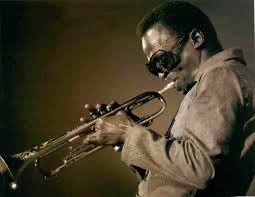Did you know that if you can sing the tunes or the pieces you are learning you actually are able to perform them better? As Miles Davis said, you need to know the words to any song you want to play if you really want to “get it right”.
Yes, but you say, I can’t hold a tune in a bucket, how am I going to do this? I must be doomed to be a mediocre player the rest of my life. Well, my friend, that is not true. It doesn’t matter how well you actually sing, or if you sing in tune, or it you have a “nice” voice, it only matters that you are able to embody the music so when you approach your instrument, the music flows through your whole body.
The first way to use singing to improve the performance of a piece is to learn all the words. The words hold the key to understanding the emotion the composer was trying to convey. It might be an upbeat happy song about new love, or possibly a song about grief and loss. Knowing what the music is about gives meaning to the way you play it.
But you mention, there are no words to the piece I’m working on. This is where you get to be creative and come up with your own words. How does the music make you feel? Do you think of places and times when you listen to the song? Make up a story to go with the music, then, remember the story and the emotions you feel about the story as you play the piece.
Secondly, you learn the song/piece and are able to sing it without looking at the music. The simple act of singing it, whether you are able to sing in tune or not, helps you memorize the music. Memorizing the music to the extent that you are able to sing it as you go about your day, getting up in the morning, eating breakfast, etc. makes the piece become embedded in your body. Then when you go to play, it’s as if the music begins to flow and becomes more emotionally poignant.
Last, and most important, singing the piece you are learning brings a sense of familiarity; the piece becomes your long lost friend. You realize how much the piece has become part of your life; part of your world and now you can tell the story to others, your listeners. When you sing the piece through your instrument the story is told to your audience and they will “get it”.
This completes the cycle of the music. The composer writes the piece to convey his emotions and thoughts. Next, you, the musician, learn the piece and bring it to life by understanding the words, the inflections, and creating a deep knowing of the piece through singing it. Finally, the audience listens, absorbs, and is touched by the piece and is enriched.
These are three ways that singing a piece of music you are learning improves you ability to perform it and touch hearts. Finding the emotional center of a song brings it to life and creates a satisfying experience for both you as the performer and the audience who listens.
